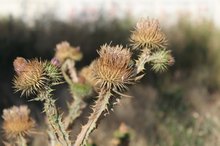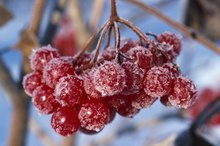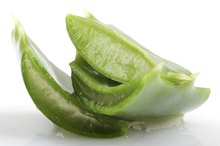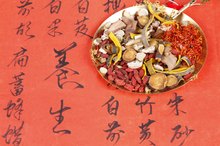Chanca Piedra & Its Effect on the Kidneys
Indigenous to the Amazonian rain forest, chanca piedra, which means "stone breaker" in Spanish, has been used by many cultures as a remedy for kidney stones 2. Research on the plant in Germany, Brazil and India has found it an effective therapy for kidney health and other major health concerns, including high blood pressure, gallstones and diabetes.
Kidney Stone Treatment
Kidney stones are deposits of mineral and acid salts that form inside the kidney when urine becomes concentrated and minerals crystallize 2. A member of the phyllanthus genus, chanca piedra has been used in Brazil, Peru and other countries as a treatment for breaking up kidney stones and as a remedy for urinary tract infection 2. 12"
Research
Herbal Remedies to Dissolve Kidney Stones
Learn More
After giving chanca piedra to more than 100 people with kidney stones, German physician, Wolfram Wiemann found that 94 percent of them eliminated their stones within two weeks 2. Other than cramping during the passage of the stones, chanca piedra caused no side effects, according to the research. Based on these results, Weimann concluded that the plant offers a cure for kidney stones 2. Additional studies in Brazil found that chemicals in chanca piedra keep calcium crystals and crystals of calcium oxalate from entering kidney cells, Balch writes.
Gall Stone Treatment
In addition to its use in treating kidney stones, physicians in South America have used chanca piedra, which also is cultivated in the Bahamas, southern India and China, as a treatment to dissolve gallstones--hardened deposits of digestive fluid that can form in your gallbladder 2.cause:
- In addition to its use in treating kidney stones
- physicians in South America have used chanca piedra
- which also is cultivated in the Bahamas
- southern India
- China
- as a treatment to dissolve gallstones--hardened deposits of digestive fluid that can form in your gallbladder 2
Research in India has found that the plant promotes optimal gallbladder and liver function. South American physicians have used chanca piedra to treat diabetes and scientists at Toyama University in Japan have isolated a compound in chanca piedra that can be used to treat high blood pressure. Additionally, the plant has been used as a diuretic, pain reliever, appetite stimulator and digestive aid.
Method of Administration
Herbs for Improving Kidney Function
Learn More
While the traditional method for incorporating chanca piedra in therapy to clear kidney stones or as a general tonic involves preparing it as a tea, chanca piedra, also known by its ayurvedic name phyllanthus, is used in tablet and tincture form 2. Companies that manufacture tinctures of the plant sell the product as chanca piedra or quebra pedra, its name in Portuguese. Some pharmacies in Brazil offer extracts of the plant.
Contraindications
Despite its use in South American medicine, you should consult your doctor before taking extracts of the plant as it may have contraindications with medications prescribed for heart ailments and diabetes. Due to its ability to help rid the body of excess water, long-term use of chanca piedra may interfere with medical conditions in which taking diuretic substances isn't advised. Despite these concerns, there have been no reports of toxicity or side effects among study participants who have been directed to use chanca piedra for up to three months.
Related Articles
References
- "Prescription for Herbal Healing"; Phyllis A. Balch; 2002
- MayoClinic.com: Kidney Stones
- Sage Press, Inc.: Technical Data Report for Chanca Piedra
- U.S. Food and Drug Administration. Warning letter: Herbs America, Inc. April 18, 2018.
- Lee NY, Khoo WK, Adnan MA, Mahalingam TP, Fernandez AR, Jeevaratnam K. The pharmacological potential of Phyllanthus niruri. J Pharm Pharmacol. 2016;68(8):953-69. doi:10.1111/jphp.12565
- Pucci ND, Marchini GS, Mazzucchi E, et al. Effect of phyllanthus niruri on metabolic parameters of patients with kidney stone: a perspective for disease prevention. Int Braz J Urol. 2018;44(4):758-764. doi:10.1590/S1677-5538.IBJU.2017.0521
- Ayala G, Escobedo-hinojosa WI, De la cruz-herrera CF, Romero I. Exploring alternative treatments for Helicobacter pylori infection. World J Gastroenterol. 2014;20(6):1450-69. doi:10.3748/wjg.v20.i6.1450
- Boim MA, Heilberg IP, Schor N. Phyllanthus niruri as a promising alternative treatment for nephrolithiasis. Int Braz J Urol. 2010;36(6):657-64. doi:10.1590/s1677-55382010000600002
- Peace Health. Health Information Library. Phyllanthus. Updated 2020.
- Okoli CO, Obidike IC, Ezike AC, Akah PA, Salawu OA. Studies on the possible mechanisms of antidiabetic activity of extract of aerial parts of Phyllanthus niruri. Pharm Biol. 2011;49(3):248-55. doi:10.3109/13880209.2010.501456
- National Institute of Diabetes and Digestive and Kidney Diseases. Eating, diet, and nutrition for kidney stones. Updated May 2017.
- Ferraro PM, Curhan GC, Gambaro G, Taylor EN. Total, dietary, and supplemental vitamin C intake and risk of incident kidney stones. Am J Kidney Dis. 2016;67(3):400–407. doi:10.1053/j.ajkd.2015.09.005
- Harvard Health Publication. The kidney stone diet: Not as restricive as you may think. Updated 2020.
Resources
- "The Healing Power of Rainforest Herbs" ; Leslie Taylor; 2005
Writer Bio
Cassie M. Chew is a multimedia journalist who covers politics, health care, education policy and technology news for print and online newspapers, magazines and trade press journals. When she's not pursuing a story, Chew enjoys independent film, biographies and books about nutrition and health. She holds a Master of Science in journalism from Northwestern University.









